How the Siberian tiger was brought back from the brink of extinction

The forests of Russia’s Far East evoke a strange feeling, one that most Europeans have not been forced to consider for centuries. It is the sensation of being watched; of unseen menace lurking between the trees. Ultimately, it is the realisation that you are among predators, and being contemplated as either a rival or prey.
A loud roar echoes around as we tread through a valley of volcanic rock formed between a dense canopy of Mongolian oak and Korean pine. My guide, Pavel Fomenko, hands me a flare with the instruction to use it should a bear approach.We creep forward, crunching over fallen leaves while our other guide, the hunting inspector for Primorsky Krai province, Alexander Korneev, peels off into the undergrowth.
Ravens shriek about the treetops. If the birds are up, Fomenko warns, it means something has disturbed them. We arrive at a clearing scattered with clumps of fur. A few metres away lie the remains of a black bear, buzzing with flies. This is what we have been searching for: the recently dispatched supper of an Amur tiger.
They call this boreal wilderness the taiga in Russian, forests sprawling hundreds of miles from the North Korean border up towards the Arctic. They are home to a vast collection of flora and fauna and, above all, predators. An estimated 95 per cent of the world’s population of Amur (or Siberian) tigers live here.
Up to 10ft long, larger, heavier and stronger than their Asian cousins, they are the undisputed rulers of the forest; their orange, black and white pelts enable them to move like ghosts between the trees.
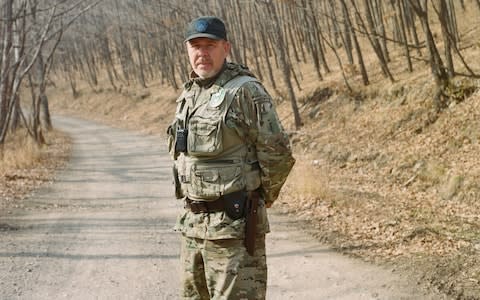
We have been tracking this particular tiger, Vladik, since my arrival in the Russian port city of Vladivostok three days earlier. A young male around four years old and weighing more than 22st, he first drew attention to himself in October 2016 after wandering into Vladivostok’s concrete suburbs and provoking a storm of publicity. Eventually he was caught and taken to a tiger rehabilitation centre, before being released this May in the Bikin National Park, wearing a GPS collar.
Since then, however, Vladik has been steadily heading south, back towards Vladivostok, covering around 450 miles and killing 10 large animals en route, including bear, deer and wild boar. Fomenko, who is WWF Russia’s head of rare species conservation, fears that if Vladik continues this trajectory he will end up once again too close to a town and have to be recaptured and sent to a zoo.
‘Vladik is a lovely tiger with all the rights and ability to live in the wild,’ he says. ‘I worry about him and all of Russia’s Amur tigers. All of the time.’ The Amur tiger is that rarity, an endangered species whose population is increasing. In the 1930s, numbers fell as low as 20 animals, threatened to the point of extinction by poaching and logging.
In 1995, there were 330 to 371 adult tigers. In 2015, after a survey of 60,000 square miles of the tigers’ habitat, the number had risen to 540 in the wild (including some 100 cubs). The success story (albeit one cautiously told) of Amur tigers is at the forefront of the WWF’s mission to increase the world’s tiger population in the wild to more than 6,000 by 2022, the next Chinese year of the tiger (up from the 3,900 counted in 2016).That figure would mark a huge step forward in achieving global security for tigers, whose populations were decimated by 97 per cent in the past century.
Much of the progress in Russia is down to men like Fomenko and Korneev, who have spent decades on the front line fighting poachers seeking tiger skins and body parts to supply the voracious Asian market. Like rhinos, tigers are valued for bogus medicinal properties.
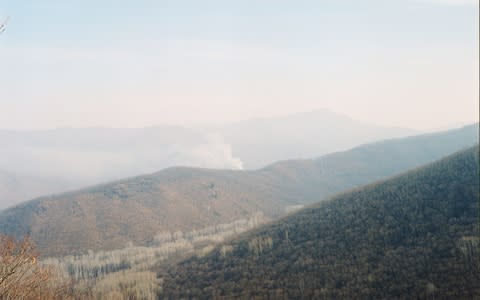
One of many prevailing myths is that if you poke a tiger whisker into a decaying tooth it will stop it aching. The stakes are high. A poacher can pay fines of up to one million roubles (£13,000), while those caught killing a tiger also face 15 years in prison. As a result, poachers are willing to fight to the death. Fomenko can recall at least three occasions on which armed poachers have tried to kill him.
A few years ago, Korneev, whose brigade catches around 120 culprits a year, was seriously injured after being run over by a poacher on a snowmobile. When he first started as a hunting inspector 13 years ago, Korneev tells me, even to find a tiger paw print was big news.
‘Now I see the actual animal three times a year,’ he grins. The most recent sighting was four days previously when he spotted a tiger stalking a family of wild boar over a ridge. It paused, contemplating him with unblinking amber eyes before bristling and slowly beginning to advance. To ward it off Korneev fired his hunting rifle into the air. As the report cracked through the stillness, the tiger melted into the forest.
The first time Pavel Fomenko met a tiger, it ate his dog. He tells me the story during lunch one day when we are sitting by a fire in the forest eating cheese and bread, and drinking smoke-infused tea boiled on the open flames. He was barely 20 at the time, out hunting with his dog, Amba, when it suddenly started barking at something rustling in the bushes.
‘I was inexperienced and didn’t realise what was happening, and suddenly this tiger pounced in front of me.’ Fomenko’s weather-beaten face takes on a rueful expression, ‘I loved that dog.’
A great bear of a man prone to long philosophical soliloquies in-between explaining his scientific studies of the tiger, the 54-year-old is a hero in the Tolstoyan mould. Not least in his connection to the land.
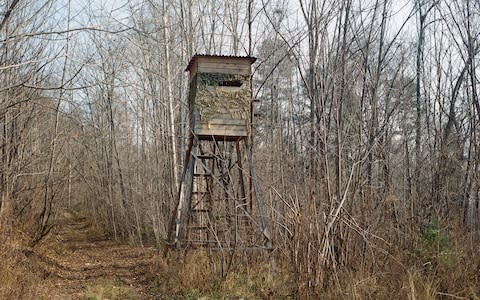
Fomenko spends weeks at a time in the wilderness away from his wife Yulia and two sons, and regards his time there as spiritually cleansing. He grew up in a coal-mining town in south Siberia where, like his father and grandfather before him, he worked in the pits. He recalls operating a digger and looking up at a distant forest on the horizon: ‘All the time I knew I was doing something wrong.’
Fomenko decided, instead, to study ecology at Irkutsk Agrarian University. After graduating, he moved to Primorsky Krai to continue his studies as a biologist and work as a wildlife game manager. Like some 90,000 others in the province he is a proud hunter and would supplement his income by shooting sable (a small mammal similar to a pine marten, prized for its fur). He still hunts today and says, ‘Many people do not understand hunters are the true friends of nature.’
Amur tiger
Fomenko revels in such contradictions and insists numerous times while we’re together that he doesn’t even like tigers. ‘For me, the tiger is an umbrella. I can protect everything using money intended only for tigers and can conserve the forest where they live. So thank God we have our tigers.’ Fomenko joined the WWF in 1994.
The Soviet Union had been dissolved three years earlier and with it state funding for nature protection disappeared almost overnight. Chinese prospectors quickly moved in. ‘Everything was targeted, from timber to frogs and, of course, tigers,’ Fomenko says. ‘And so people started to kill.’
But in recent years the tiger protectors have found themselves a powerful ally: the Russian president Vladimir Putin, who has come to regard the Amur tiger as a potent symbol of national pride. The Russian government has agreed to restrict logging in Amur tiger habitat and a presidential order in 2011 banned logging of Korean pine (although, over the past five years enough illegal wood from other species was logged to fill 400 miles of railways carriages).
At the same time, it has has also increased penalties for poaching and possession of tiger parts. Putin nowadays rarely wastes a photo opportunity with a tiger, and a few years ago state media reported he had personally immobilised one with a tranquilliser dart as it charged towards a nearby camera crew – although no footage of the deed exists.
Fomenko only raises an eyebrow when I ask him what he thinks. My visit comes a few weeks before the first snowfall of the year in Primorsky Krai. The silver birches, bent almost double under the weight of last year’s drifts, stand testament to the severity of winter here, when temperatures of -30C are not uncommon.
In late autumn, the mercury hovers around freezing in the day and well below at night. On one such cold afternoon I meet Alexander Primenko who lives in a small clearing in the forest. The 65-year-old has stayed here alone for the past seven years and is part of a network of so-called ‘watchmen’, established to stay in the forest throughout winter to keep a lookout for poachers.
Three tigers roam the forest close to his home and that morning we’d set camera traps nearby – tying them to trees on known routes. We manage to capture an image of one of the beasts. We also come across a paw print in the mud, the size of two fists and unmistakably belonging to a tiger.
Being a watchman is a dangerous occupation. The left side of Primenko’s face carries a livid scar from a bear attack five years ago and his nostril is torn in half, whistling during the several shots of home-brewed liquor he drinks in my presence. ‘It was only a scratch,’ he says.
He grew up in a village 120 miles from here, which is now all but abandoned. After his wife died of cancer a decade ago, he decided to move into the forest and live self-sufficiently as a watchman helping to save the tiger. He keeps chickens and bees, has a small generator for electricity and a wood-fired stove. In total, he has lost 14 dogs to tigers over the years and points out the empty kennels where a tiger recently broke in and ate three.
‘I see it like paying rent to them,’ he says. ‘The only feeling I have for the tiger is one of total respect. When you hear the roar, the noise is loud enough to split your head from your ears.’ A four-hour drive away I meet another watchman, Alexei Mitusov, 57, who also lives alone but with a stack of Arthur Conan Doyle and Agatha Christie books to see him through the winter.
‘The tigers are always present, even when you don’t see them,’ he says. ‘To me, the tiger is the owner of the forest and I am his guest.’ As well as tackling poachers and loggers, Fomenko has placed great emphasis on conserving tigers’ habitat and prey. Over the past decade, three major national parks and other protected areas have been established, encompassing a land mass spanning almost 4,000 square miles and around 20 per cent of the tigers’ range.
He also works closely with the 90 or so privately leased hunting estates in Primorsky Krai, 10 of which have now been transformed into what Pavel calls ‘model estates’, where tigers, and the animals they feed on, are thriving. Increasing their food in the forests means fewer tigers are wandering into villages. But, still, 40 conflicts are recorded each year, resulting in mauling and occasionally death.
At present, roughly one person is killed by a tiger every two years. The most recent came this October when a 43-year-old man was mauled to death gathering pine nuts in Khabarovsk region, which neighbours Primorsky Krai. If caught, Fomenko says, the maneater will most likely end up in permanent captivity. Tiger ‘prison’, he calls it.
With the vast majority of Russia’s Amur tigers that come into contact with humans, though, capturing and rehabilitating them before releasing them elsewhere in the wild is key to the national strategy. Not far from Vladivostok is a specialist centre for tigers that have come into conflict with humans.
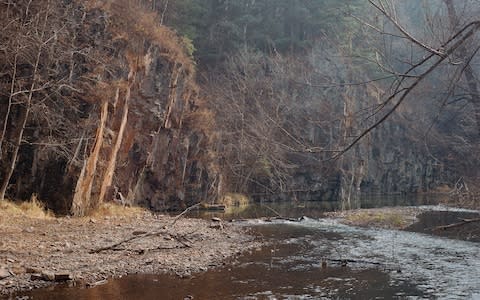
Established in 2012 with support from the government and various wildlife groups, so far 10 animals have been released from here back into the wild (including Vladik). The work is overseen by Ekaterina Blidchenko, a 30-year-old zoologist from Moscow.
When I visit, there are two cubs, Saihan and Lazovka, who were bought here the previous winter. Blidchenko explains that the tigers are kept in sealed pens away from humans and slowly taught how to fend for themselves with live prey released once every five days.
She shows me a recent CCTV recording of the tigers taking down a deer. One of the cubs lies in wait while the other chases the deer towards it. At the moment of impact the tiger leaps from its hiding place and catches the deer head on, grabbing its body and mauling its head. The deer is dead in a few seconds. It is both shocking and deeply impressive.
‘I love all predators,’ she says. ‘Sometimes they are prejudged by the people who live close to them but I don’t think this is fair. The tiger is part of our legend and fairy tales. If you start to look deeper, you see they are afraid themselves – more frequently than we can imagine.’
For days, we wait for news of Vladik’s latest movements. He’s passed through numerous villages and crossed the Trans-Siberian railway. If he moves any closer to Vladivostok he will have to be caught. One morning towards the end of our trip, Fomenko receives a phone call. Vladik has turned south-west, away from the city, over a vast plateau leading towards the mountains of the Chinese border. A broad smile cracks across Fomenko’s face. Vladik is safe – for now.

